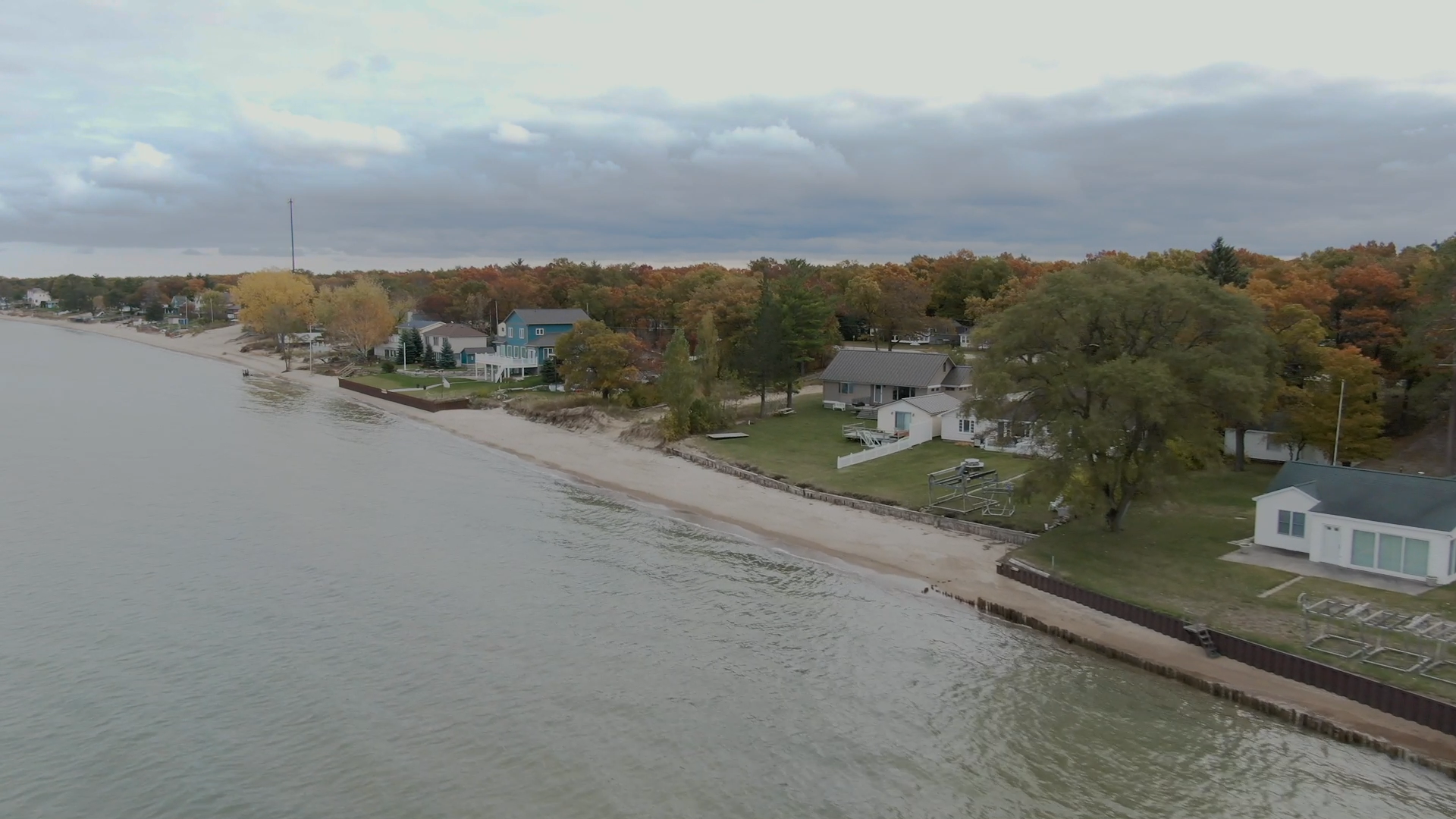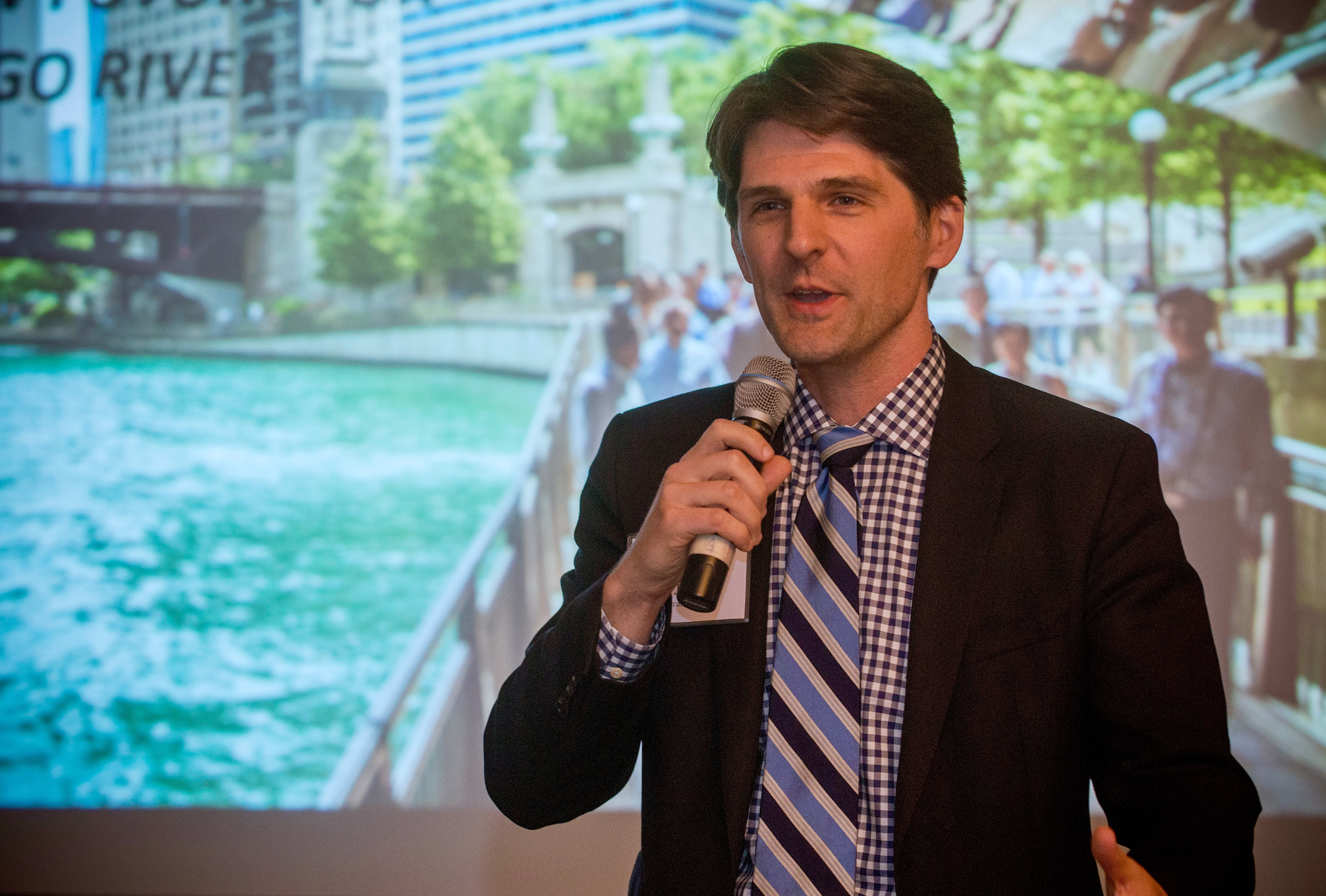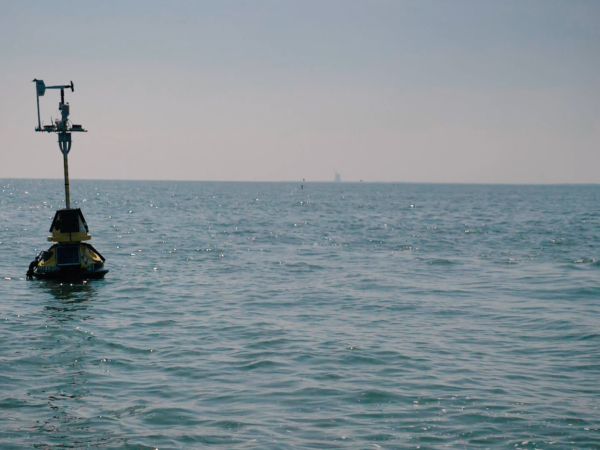
Chicago’s Joel Brammeier came of age advocating for the Great Lakes in an era when federal programs that are widely accepted today like the Great Lakes Restoration Initiative were barely on the drawing board.
Brammeier started his advocacy work in 2001 when he managed habitat programs for the Lake Michigan Federation, which later became the Alliance for the Great Lakes as its mission expanded. Today he’s the Alliance’s president and CEO, a role he assumed in 2010.
If timing is everything, Brammeier hit the jackpot. Former President Barack Obama had taken office and put $475 million in his first budget for Great Lakes restoration, the top priority for advocates. And restoration remained a top priority for Brammeier and his Great Lakes colleagues each year as they made the case for federal funding in Washington.

Alliance for the Great Lakes President and CEO Joel Brammeier (Photo by Lloyd DeGrane, via Alliance for the Great Lakes)
Fast forward to 2021 and things have changed. After four years of environmental protection resting on the back burner, President Joe Biden has made it a priority – with an emphasis on environmental justice.
And that aligns with new priorities for the Alliance, who put environmental justice at the top of its 2021 priority list, replacing restoration and other legacy issues like fighting Asian carp and Lake Erie’s algal blooms.
Great Lakes Now Senior Correspondent Gary Wilson recently talked with Brammeier about how the Alliance came to embrace and prioritize environmental justice over the legacy programs and how they can succeed.
Brammeier shared his thoughts on what he wants from a new Great Lakes region EPA administrator and where he would like to see the Great Lakes in 20 years.
The interview took place on the phone and was recorded, transcribed and edited for clarity and length.
Great Lakes Now: In the Alliance’s top priorities for the Biden administration, environmental justice is No. 1, followed by funding for water infrastructure and ending water shutoffs. Why did that trio replace traditional priorities like Great Lakes restoration?
Joel Brammeier: We need to expand our definition of what a restored Great Lakes looks like. I’ve done a lot of listening over the last several years to people in the region and the urgency of that connection between clean water and health has become obvious to me. Anybody who’s listening for it can hear it.
What I see is that we’ve got a Great Lakes region surrounded by abundant water that runs through every part of the region. We’ve got to make sure that people across the Great Lakes have the opportunity to enjoy and rely on it. That means making sure water sources are safe and affordable to everybody. It means encouraging people to have positive, healthy experiences with the Great Lakes in all the ways they experience them.
There’s a great diversity of how people experience the Great Lakes across the region. We’ve got to step into that and part of it is making sure those experiences are positive and part is making sure we’re addressing the disproportionate burden of pollution and contamination on communities that bear too much of that burden. That’s a part of our Great Lakes restoration reality as well.
Watch Great Lakes Now‘s segment on the Great Lakes Restoration Initiative:
API key not valid. Please pass a valid API key.GLN: There’s no quick fix for systemic environmental injustice issues. Presidents going back to Bill Clinton have talked about it, but little has happened. Why should we expect progress from President Biden?
JB: There are some specific ways that we can address the issues around environmental justice through a Great Lakes lens. While I can’t hold out a suggestion that we can solve all of those problems quickly, I can say that things like, how will the Great Lakes Restoration Initiative address some of the challenges facing environmental justice communities?
One way is to think differently about how we engage the public in federal projects that are supported by restoration funding and other federal projects that affect the Great Lakes.
These are ways that we can encourage the achievement of environmental justice goals through a Great Lakes lens. That’s something practical we can do in the short term. I also think there’s a growing awareness across the Great Lakes region that water connects us not just in the lakes themselves and on beaches, but also in the pipes that flow under our feet and the sewage pipes that deliver pollution to the lakes and, unfortunately at times, to our homes.
All these connections are becoming more apparent when you have situations like lead contamination and harmful algal blooms that compromise drinking water. The more people realize how that’s connected, the more optimistic I am about making sure that water equity solutions are part of the Great Lakes restoration equation.
GLN: Drinking water shutoffs for nonpayment in the Great Lakes region stand out given the region’s abundance of fresh water. But people living within sight of Lake Michigan may not have access to its water. Municipalities have historically been slow to react. What can President Biden do?
JB: One of the things we’ve seen during the COVID-19 pandemic was a realization that you can’t have basic health in your home unless you have access to safe and clean water in your home.
There’s a move to institute some temporary moratoria around the Great Lakes region on shutoffs and even to reconnect service in places where it was disconnected. That realization has set the bar at, “Wait a minute, water is essential for health.” Not having water in your home means you can’t have a healthy home. And we can’t have a healthy Great Lakes region without water available to homes and businesses.
Right now, the Biden administration and congress are focused on providing assistance, financial assistance where needed to urban and rural communities to keep water taps on. Those are temporary programs. Longer term, we’ve got to see a U.S. Environmental Protection Agency and a congress that supports states and municipalities to not just provide assistance programs, but actually create affordable rate structures and make sure that they’re designing long-term investments in a way that shutoffs become a thing of the past. That’s a process that’s playing out now in federal conversations about infrastructure.
Related news on Great Lakes Now:
Speaking of Water: How Can the Biden Administration Deliver on Environmental Justice Pledges?
GLN: The Alliance’s other priorities for the president are the legacy issues; restoration, Asian carp and harmful algal blooms. The multi-billion dollar restoration program is now in its 12th year and hasn’t had an update. Is one overdue or just stay the course?
JB: The restoration initiative has been phenomenally successful. There’s still a lot of work to be done. There are also updates and changes to that program that are needed.
At the end of the last administration congress passed a reauthorization of the Great Lakes Restoration Initiative that will increase the funding to $475 million a year for five years. These new resources can go to continuing the cleanup of contaminated sites but also to advancing the health of environmental justice communities.
They can go toward addressing the coastal management challenge we’re facing with extreme lake levels going from record lows to record highs. We’ve got policies on the books like the coastal resiliency study that need to be done that could benefit from new resources. We’ve got big-dollar items coming up for invasive species protection. There are ways that we need to be thinking about using restoration funding differently as we step into the next 10 years of the program. That’s in addition to following through on work that still needs to be done like delisting Areas of Concern.
GLN: According to information provided by the U.S. EPA, the Great Lakes Restoration Initiative has spent over $100 million since 2010 trying to control nutrient runoff from farms that cause harmful algal blooms in Lake Erie. Absent regulations, which both political parties are not inclined to impose, has that money essentially been wasted or misspent?
JB: I don’t think spending more money on cleaning up agricultural pollution is needed. Spending money differently is needed, and regulations are needed.
Getting the federal agencies to work together transparently and aggressively to stop agricultural pollution is critical. We’ve got this mandate to reduce pollution to Lake Erie, for example, by 2025, a 40% phosphorus reduction. That will require EPA, USDA, NOAA and others to work in the same room with members of the community and be really clear on how we’re going to achieve those goals in the next four years using all the tools we’ve got. That will include regulation whether it’s at the state or federal level.
I don’t see how you get those levels down to where they need to be for a healthy Great Lakes without additional protections in place. That’s something that we’ve known for a long time and I think we will be very clear with the administration on how critical that is for the Great Lakes region.
GLN: The Great Lakes region EPA office in Chicago will soon have a new administrator. What are you looking for in this executive related to environmental justice? Remembering that this office had oversight responsibility during the Flint water crisis, and there’s still a $600 million negligence suit pending against it.
JB: The regional administrator is a critical role for EPA, of course, running the Great Lakes National Program Office and the Office of Water in the region along with enforcing policy.
Whoever is in that role has to do a couple of things. They have to restore the integrity of the office, rehire staff and fill capacity that’s needed, and just get the department working again on its basic enforcement and protection mission.
Next, it has to take a holistic approach to the idea of restoring our waters. That goes back to following through on the promise of the restoration program but also bringing in the idea that safe, clean and affordable water is critical to communities urban and rural, small and large. The person in that position needs to take that perspective on Great Lakes water to be successful over the next four years. I know those kinds of approaches are front of mind in the administration, and I’m looking forward to working productively with the new regional administrator. I hope it happens soon.
GLN: You’ve had 20 years of working on Great Lakes protection and were involved in advancing some of the programs we’ve discussed. Yet there’s still work to be done. Where would you like to see the Great Lakes 20 years from now?
JB: I would like to see a Great Lakes restored in a way that includes all of the ways this vast diversity of people and places use Great Lakes water across the region.
Whether that means playing on a beach or enjoying natural space or being able to have safe, reliable water in your home, building a region around water means all people and wildlife can enjoy that water and rely on it where they are. I’m hopeful that’s the direction that our Great Lakes region is going and we can be part of continuing to seek a refreshed consensus around the idea that everybody deserves and has a right to clean water.
We can lead in that space like no other part of the country. That’s a basic thing that a lot of Great Lakers know really well. I’m optimistic about a future that looks like that in spite of the challenges we face across the region and the country.
Catch more news on Great Lakes Now:
Air, Wind, Solar: In the Great Lakes region, energy stands out in President Biden’s efforts
H2Ohio: Agency directors focus on wetlands, farmer subsidies, replacing lead lines
Treaty Rights Acknowledged For First Time in Oil Pipeline’s Controversial History
Your Federal Tax Dollars: How they are funding the Great Lakes Restoration Initiative
API key not valid. Please pass a valid API key.Featured image: (Great Lakes Now Episode 1020)




